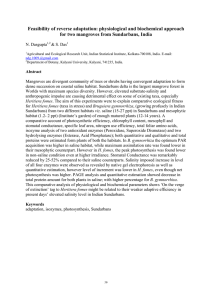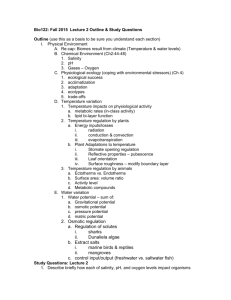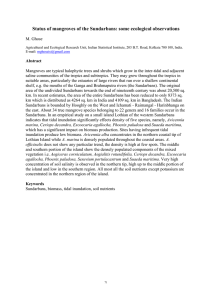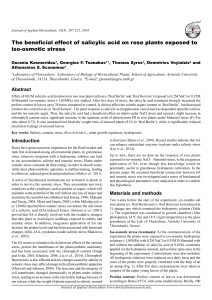Salinity imposed biochemical changes towards efficient adaptation of some
advertisement
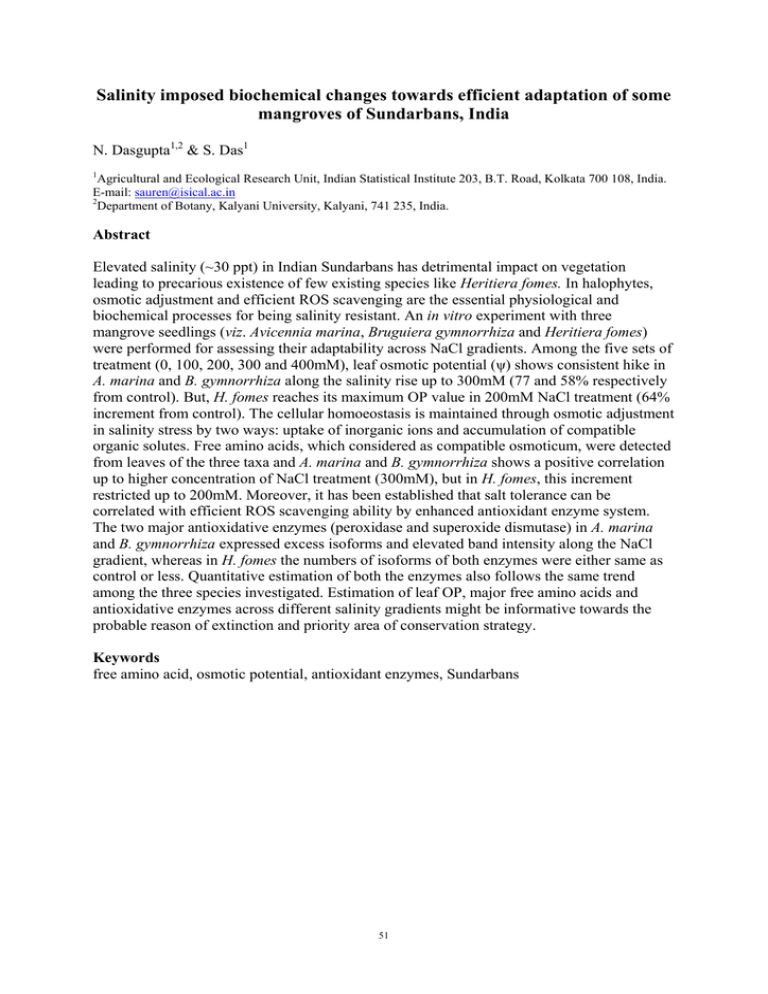
Salinity imposed biochemical changes towards efficient adaptation of some mangroves of Sundarbans, India N. Dasgupta1,2 & S. Das1 1 Agricultural and Ecological Research Unit, Indian Statistical Institute 203, B.T. Road, Kolkata 700 108, India. E-mail: sauren@isical.ac.in 2 Department of Botany, Kalyani University, Kalyani, 741 235, India. Abstract Elevated salinity (~30 ppt) in Indian Sundarbans has detrimental impact on vegetation leading to precarious existence of few existing species like Heritiera fomes. In halophytes, osmotic adjustment and efficient ROS scavenging are the essential physiological and biochemical processes for being salinity resistant. An in vitro experiment with three mangrove seedlings (viz. Avicennia marina, Bruguiera gymnorrhiza and Heritiera fomes) were performed for assessing their adaptability across NaCl gradients. Among the five sets of treatment (0, 100, 200, 300 and 400mM), leaf osmotic potential (ψ) shows consistent hike in A. marina and B. gymnorrhiza along the salinity rise up to 300mM (77 and 58% respectively from control). But, H. fomes reaches its maximum OP value in 200mM NaCl treatment (64% increment from control). The cellular homoeostasis is maintained through osmotic adjustment in salinity stress by two ways: uptake of inorganic ions and accumulation of compatible organic solutes. Free amino acids, which considered as compatible osmoticum, were detected from leaves of the three taxa and A. marina and B. gymnorrhiza shows a positive correlation up to higher concentration of NaCl treatment (300mM), but in H. fomes, this increment restricted up to 200mM. Moreover, it has been established that salt tolerance can be correlated with efficient ROS scavenging ability by enhanced antioxidant enzyme system. The two major antioxidative enzymes (peroxidase and superoxide dismutase) in A. marina and B. gymnorrhiza expressed excess isoforms and elevated band intensity along the NaCl gradient, whereas in H. fomes the numbers of isoforms of both enzymes were either same as control or less. Quantitative estimation of both the enzymes also follows the same trend among the three species investigated. Estimation of leaf OP, major free amino acids and antioxidative enzymes across different salinity gradients might be informative towards the probable reason of extinction and priority area of conservation strategy. Keywords free amino acid, osmotic potential, antioxidant enzymes, Sundarbans 51
